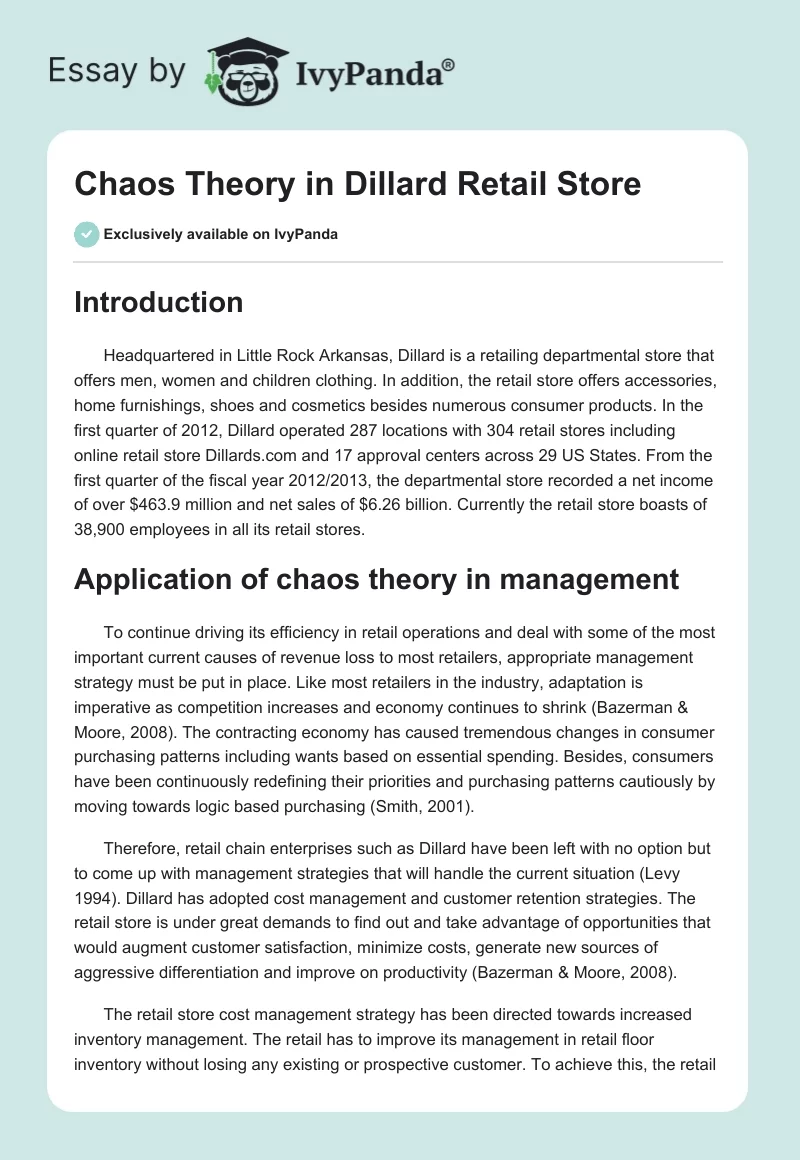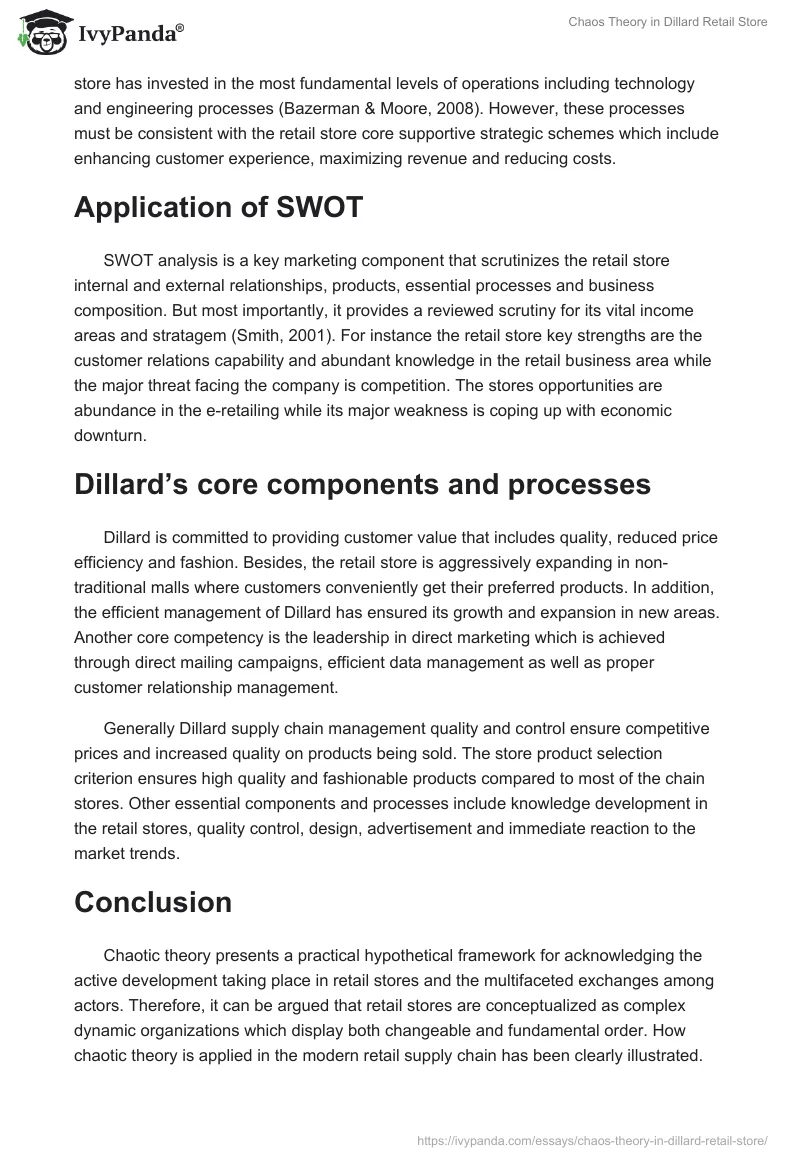Introduction
Headquartered in Little Rock Arkansas, Dillard is a retailing departmental store that offers men, women and children clothing. In addition, the retail store offers accessories, home furnishings, shoes and cosmetics besides numerous consumer products. In the first quarter of 2012, Dillard operated 287 locations with 304 retail stores including online retail store Dillards.com and 17 approval centers across 29 US States. From the first quarter of the fiscal year 2012/2013, the departmental store recorded a net income of over $463.9 million and net sales of $6.26 billion. Currently the retail store boasts of 38,900 employees in all its retail stores.
Application of chaos theory in management
To continue driving its efficiency in retail operations and deal with some of the most important current causes of revenue loss to most retailers, appropriate management strategy must be put in place. Like most retailers in the industry, adaptation is imperative as competition increases and economy continues to shrink (Bazerman & Moore, 2008). The contracting economy has caused tremendous changes in consumer purchasing patterns including wants based on essential spending. Besides, consumers have been continuously redefining their priorities and purchasing patterns cautiously by moving towards logic based purchasing (Smith, 2001).
Therefore, retail chain enterprises such as Dillard have been left with no option but to come up with management strategies that will handle the current situation (Levy 1994). Dillard has adopted cost management and customer retention strategies. The retail store is under great demands to find out and take advantage of opportunities that would augment customer satisfaction, minimize costs, generate new sources of aggressive differentiation and improve on productivity (Bazerman & Moore, 2008).
The retail store cost management strategy has been directed towards increased inventory management. The retail has to improve its management in retail floor inventory without losing any existing or prospective customer. To achieve this, the retail store has invested in the most fundamental levels of operations including technology and engineering processes (Bazerman & Moore, 2008). However, these processes must be consistent with the retail store core supportive strategic schemes which include enhancing customer experience, maximizing revenue and reducing costs.
Application of SWOT
SWOT analysis is a key marketing component that scrutinizes the retail store internal and external relationships, products, essential processes and business composition. But most importantly, it provides a reviewed scrutiny for its vital income areas and stratagem (Smith, 2001). For instance the retail store key strengths are the customer relations capability and abundant knowledge in the retail business area while the major threat facing the company is competition. The stores opportunities are abundance in the e-retailing while its major weakness is coping up with economic downturn.
Dillard’s core components and processes
Dillard is committed to providing customer value that includes quality, reduced price efficiency and fashion. Besides, the retail store is aggressively expanding in non-traditional malls where customers conveniently get their preferred products. In addition, the efficient management of Dillard has ensured its growth and expansion in new areas. Another core competency is the leadership in direct marketing which is achieved through direct mailing campaigns, efficient data management as well as proper customer relationship management.
Generally Dillard supply chain management quality and control ensure competitive prices and increased quality on products being sold. The store product selection criterion ensures high quality and fashionable products compared to most of the chain stores. Other essential components and processes include knowledge development in the retail stores, quality control, design, advertisement and immediate reaction to the market trends.
Conclusion
Chaotic theory presents a practical hypothetical framework for acknowledging the active development taking place in retail stores and the multifaceted exchanges among actors. Therefore, it can be argued that retail stores are conceptualized as complex dynamic organizations which display both changeable and fundamental order. How chaotic theory is applied in the modern retail supply chain has been clearly illustrated.
References
Bazerman, M. & Moore, D. (2008). Judgment in managerial decision making. New Jersey, NJ: John Wiley & Sons.
Levy, D. (1994). Chaos theory and strategy: theory, application, and managerial implications. Strategic Management Journal, 15(6), 167-178.
Smith, W. (2001). Chaos theory and postmodern organization. International Journal of Organizational Theory and Behavior, 4(1), 159–286.


